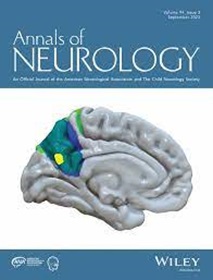To investigate neurologic manifestations of post-acute sequelae of SARS-CoV-2 infection (Neuro-PASC) in post-hospitalization Neuro-PASC (PNP) and non-hospitalized Neuro-PASC (NNP) patients across the adult lifespan.
Cross-sectional study of the first consecutive 200 PNP and 1,100 NNP patients evaluated at a Neuro-coronavirus disease 2019 (COVID-19) clinic between May 2020 and March 2023. Patients were divided into younger (18–44 years), middle-age (45–64 years), and older (65+ years) age groups.
Younger and middle-age individuals accounted for 142 of 200 (71%) of PNP and 995 of 1100 (90.5%) of NNP patients. Significant age-related differences in the frequencies of comorbidities and abnormal neurologic findings demonstrated higher prevalence in older patients. Conversely, 10 months from COVID-19 onset, we found significant age-related differences in Neuro-PASC symptoms indicating lower prevalence, and therefore, symptom burden, in older individuals. Moreover, there were significant age-related differences in subjective impression of fatigue (median [interquartile range (IQR)] patient-reported outcomes measurement information system [PROMIS] score: younger 64 [57–69], middle-age 63 [57–68], older 60.5 [50.8–68.3]; p = 0.04) and sleep disturbance (median [IQR] PROMIS score: younger 57 [51–63], middle-age 56 [53–63], older 54 [46.8–58]; p = 0.002) in the NNP group, commensurate with higher impairment in quality of life (QoL) among younger patients. Finally, there were significant age-related differences in objective executive function (median [IQR] National Institutes of Health [NIH] toolbox score: younger 48 [35–63], middle-age 49 [38–63], older 54.5 [45–66.3]; p = 0.01), and working memory (median [IQR] NIH toolbox score: younger 47 [40–53], middle-age 50 [44–57], older 48 [43–58]; p = 0.0002) in NNP patients, with the worst performance coming from the younger group.
Younger and middle-age individuals are disproportionally affected by Neuro-PASC regardless of acute COVID-19 severity. Although older people more frequently have abnormal neurologic findings and comorbidities, younger and middle-age patients suffer from a higher burden of Neuro-PASC symptoms and cognitive dysfunction contributing to decreased QoL. Neuro-PASC principally affects adults in their prime, contributing to profound public health and socioeconomic impacts warranting dedicated resources for prevention, diagnosis and interventions. ANN NEUROL 2025;97:369–383


